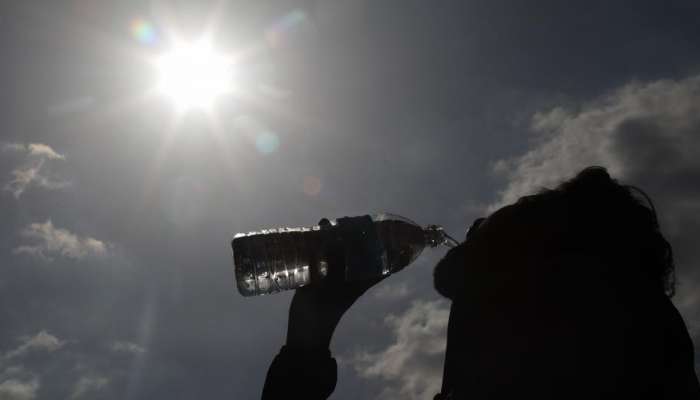
Kathmandu: Shanti Bohara is a street vendor in Dhangadhi, a city in Nepal's southern Terai region. She says the past few weeks have been extremely tough due to the searing temperatures.
The scorching heat means the fresh vegetables she wants to sell wilt and spoil within a few hours.
"In the past, during summers, we could do business in the mornings and evenings, avoiding the hot afternoon hours," she told DW. "But this year, even mornings and evenings are unbearable, posing a threat to our livelihoods."
A brutal heat wave has gripped large swathes of the South Asian nation this month, with temperatures topping 40 degrees Celsius (104 degrees Fahrenheit) for days. In certain cities, for example Nepalgunj and Nawalpur, in the country's southwest, they even reached as high as 44 degrees Celsius (111 degrees Fahrenheit).
Nepal's meteorological department has warned that the extreme temperatures are likely to persist until mid-July.
How has the heat affected people?
The hot weather has compounded hardships faced by many Nepali people.
Kundan Aryal, a professor at Tribhuvan University in Kirtipur, said that poor and underprivileged communities were being hit the hardest.
"A section of society is largely untouched by the extreme weather conditions as they have access to cooling facilities such as fans, coolers, air conditioners," he pointed out, adding: "But people in low-income groups are bearing the brunt."
"I've seen many daily-wage labourers, rickshaw pullers and construction workers continuing to work in the scorching heat, putting their health at risk."
Local media have reported that hospitals are recording an increased number of cases of dehydration, fatigue, fainting, muscle pain, vomiting, itching eyes and dizziness, among other problems.
The government has urged people to stay well-hydrated, remain indoors as far as possible and avoid sun exposure during times when sunlight is most intense.
A myriad of problems
Anjani Kumar Jha, chairman of the Nepal Health Research Council (NHRC), said that vulnerable groups such as the elderly, children and individuals with pre-existing medical conditions are at high risk.
The weather situation has also caused water shortages and frequent power outages.
Jha pointed out that this was affecting the availability of medicines and vaccines.
"Medicines are normally stored in temperatures ranging from 20 to 25 degrees Celsius. For vaccines, it's between 2 and 8 degrees Celsius," he said.
"But amid the scorching heat, most of our pharmacies now don't have necessary storage facilities, which is compromising the effectiveness of vital medications," Jha added.
The heat has also forced schools and colleges in some parts of Nepal to shut down for over a week.
Many daily-wage earners, such as farm laborers and construction workers, have been struggling to make ends meet as the heat prevents them from working.
Concerns also abound among farmers about the possibility of reduced yields if the heat conditions persist.
"My paddy and corn fields dried up due to excessive heat," said Nirpa Diwedi, a farmer from Nepal's southeastern Dhanusa district. "Now, I am worried if they will revive at all even after the monsoon season begins,", referring to a key climatic phenomenon in South Asia that results in widespread and often intense rainfall.
Experts blame climate change
The main summer months in Nepal — from May to July — are generally hot, even though the timing and intensity are likely to vary across different regions of the country. Nevertheless, temperatures have become more intense in the past decade, not just in Nepal but across South Asia.
Nepali officials and scientists blame the trend on human-caused climate change.
"If we look at the pattern, the heat waves have become more and more severe and frequent in recent years and decades," said Anil Pokharel, chief executive officer of Nepal's National Disaster Risk Reduction Management Authority (NDRRMA).
"Though this is primarily a climate change-induced trend, we humans and our behaviors, lifestyles and policies are equally responsible."
Archana Shrestha, deputy director general of the Meteorological Forecasting Division, Nepal's weather forecast service, said that "we can't deny the impact of climate change and global warming when we look at the various climatic patterns."
She called for a national strategy to tackle the challenge.
"We have no comprehensive national policy and strategy as to how to cope with the threats of heat waves," Shrestha underlined. "We even don't have any guidelines to classify the heat waves as per their severity."
But Pokharel said local authorities and communities are trying to tackle the immediate impacts of the heat waves.
"The NDRRMA, in coordination with other relevant agencies, is preparing a long-term policy and intervention strategy against the heat waves, cold waves and the overall impacts of climate change on the country."